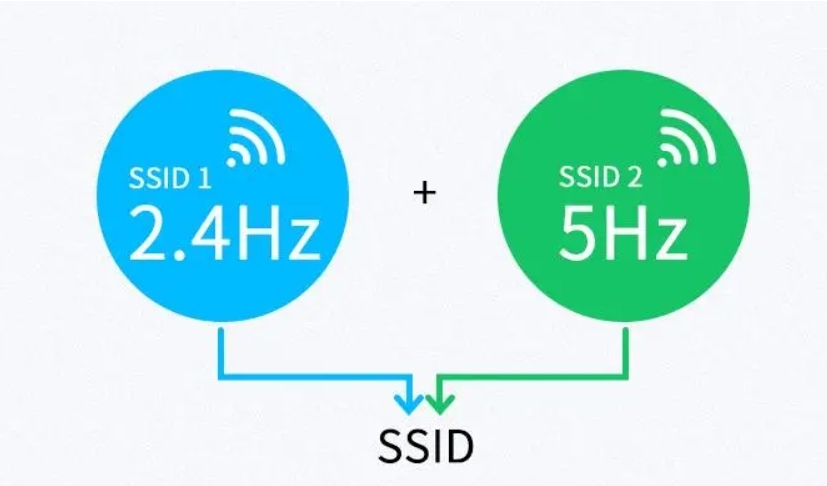WiFi 7 vs. WiFi 5-QCN9274 and QCA9880 technical introduction

With the continuous development of wireless network technology, WiFi standards have also evolved, from the early WiFi 4 (802.11n), to the widely used WiFi 5 (802.11ac), and then to the latest WiFi 7 (802.11be). Each generation of WiFi standards has brought higher transmission rates, lower latency, and greater signal coverage. This article will compare the performance of WiFi 7 and WiFi 5 in detail, especially through the two wireless network cards QCN9274 and QCA9880.
WiFi 5 (802.11ac)
Technical introduction
WiFi 5 (802.11ac) was released in 2013 and is the successor to WiFi 4. It operates primarily in the 5GHz band, providing higher bandwidth and faster data transfer rates.
QCA9880 Technical specifications
QCA9880 is a WiFi 5 wireless card launched by Qualcomm, and its main technical parameters are as follows:
** Frequency band ** : 5GHz
** Maximum throughput ** : 1.3Gbps
** Channel bandwidth ** : 20MHz, 40MHz, 80MHz
MIMO : 3x3 MIMO
** Modulation Technology ** : 256-QAM
** Number of antennas ** : 3
Performance Characteristics
** High speed ** : QCA9880 supports up to 1.3Gbps transmission rate, suitable for applications with high bandwidth requirements.
** Low latency ** : Because it works in the 5GHz band, it has less interference and provides low network latency.
** Stability ** : 3x3 MIMO technology and Beamforming technology improve signal coverage and stability.
WiFi 7 (802.11be)
Technical introduction
WiFi 7 (802.11be) is the next generation WiFi standard and is expected to be officially launched in 2024. Compared to WiFi 5, WiFi 7 offers higher bandwidth, faster transfer rates and lower latency.
QCN9274 Technical specifications
QCN9274 is a WiFi 7 wireless network card launched by Qualcomm, and its main technical parameters are as follows:
** Frequency band ** : 2.4GHz, 5GHz, 6GHz
** Maximum throughput ** : 30 Gbps
** Channel bandwidth ** : 20MHz, 40MHz, 80MHz, 160MHz, 320MHz
MIMO : 8x8 MIMO
** Modulation Technology ** : 4096-QAM
** Number of antennas ** : 8
Performance Characteristics
** Ultra-high speed ** : QCN9274 supports transmission rates of up to 30 Gbps, which is more than ten times that of WiFi 5.
** Multi-band support ** : Support 2.4GHz, 5GHz and 6GHz bands, providing more spectrum resources and better signal coverage.
** Lower latency ** : Thanks to multi-band and wider channel bandwidth, WiFi 7 provides extremely low network latency, which is suitable for applications with high real-time requirements.
** Enhanced MIMO technology ** : 8x8 MIMO and multi-user MIMO (MU-MIMO) technology, support more devices simultaneously connected, improve network capacity and efficiency.
** High order modulation technology ** : 4096-QAM provides higher data density and transmission efficiency.
WiFi 7 vs. WiFi 5 performance comparison
** Transmission rate ** :WiFi 5 (QCA9880) : up to 1.3GbpsWiFi 7 (QCN9274) : up to 30 Gbps
** Channel bandwidth ** :
WiFi 5 (QCA9880) : Max. 80MHz
WiFi 7 (QCN9274) : Max. 320MHz
** Frequency band support ** :
WiFi 5 (QCA9880) : 5GHz
WiFi 7 (QCN9274) : 2.4GHz, 5GHz, 6GHz
**MIMO Technology ** :
WiFi 5 (QCA9880) : 3x3 MIMO
WiFi 7 (QCN9274) : 8x8 MIMO
** Modulation technology ** :
WiFi 5 (QCA9880) : 256-QAM
WiFi 7 (QCN9274) : 4096-QAM
Application scenario
WiFi 5 Application scenarios
Home network: Supports HD video streaming, online games and large file transfers.
Small business: for daily office and video conferencing needs.
WiFi 7 Application scenarios
Smart Home: Supports 8K video streaming, virtual reality and augmented reality applications.Enterprise-class networks: meet the needs of large number of device access and high-bandwidth applications, such as big data transmission and cloud computing.Industrial iot: provides ultra-low latency and high reliability connectivity for automated control and real-time monitoring.
Conclusion
WiFi 7, as the latest generation WiFi standard, offers significant performance improvements compared to WiFi 5. The comparison of QCN9274 and QCA9880 shows that WiFi 7 has significant improvements in transmission rate, channel bandwidth, band support, MIMO technology and modulation technology. With the popularity of WiFi 7, we can expect a more high-speed, stable and reliable wireless network experience, driving the development of more emerging applications.
The above is a detailed technical introduction and performance comparison of WiFi 7 and WiFi 5 as well as QCN9274 and QCA9880, hoping to help your understanding. If you have any further questions or needs, please feel free to consult.








评论